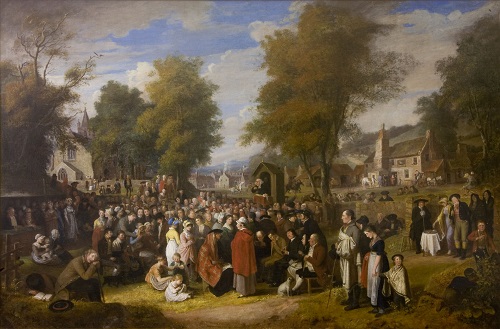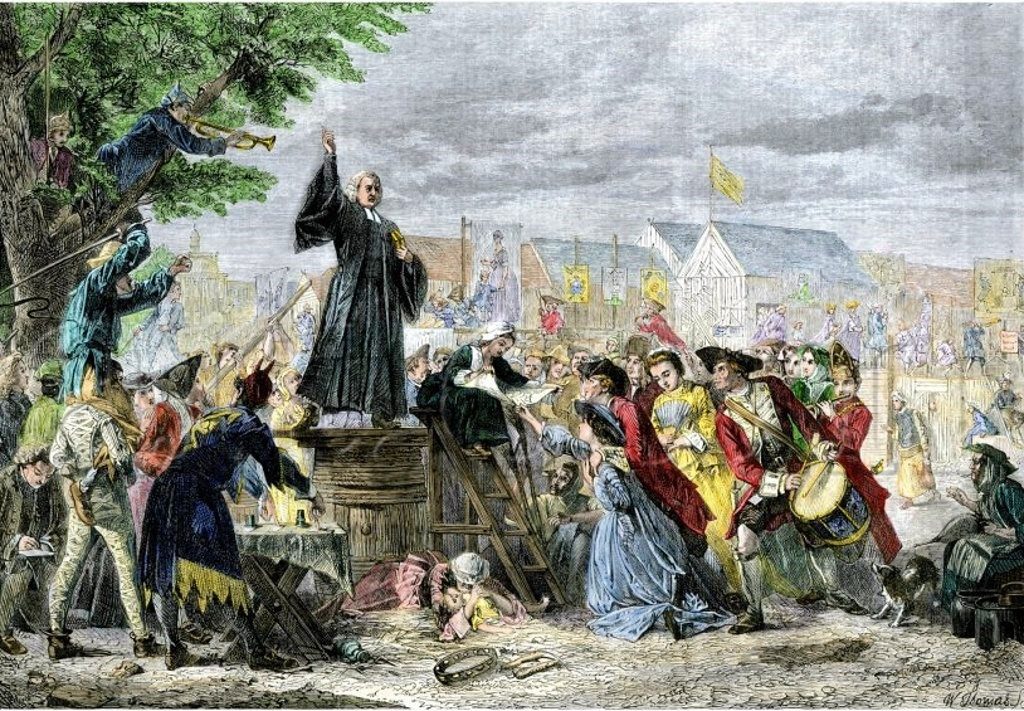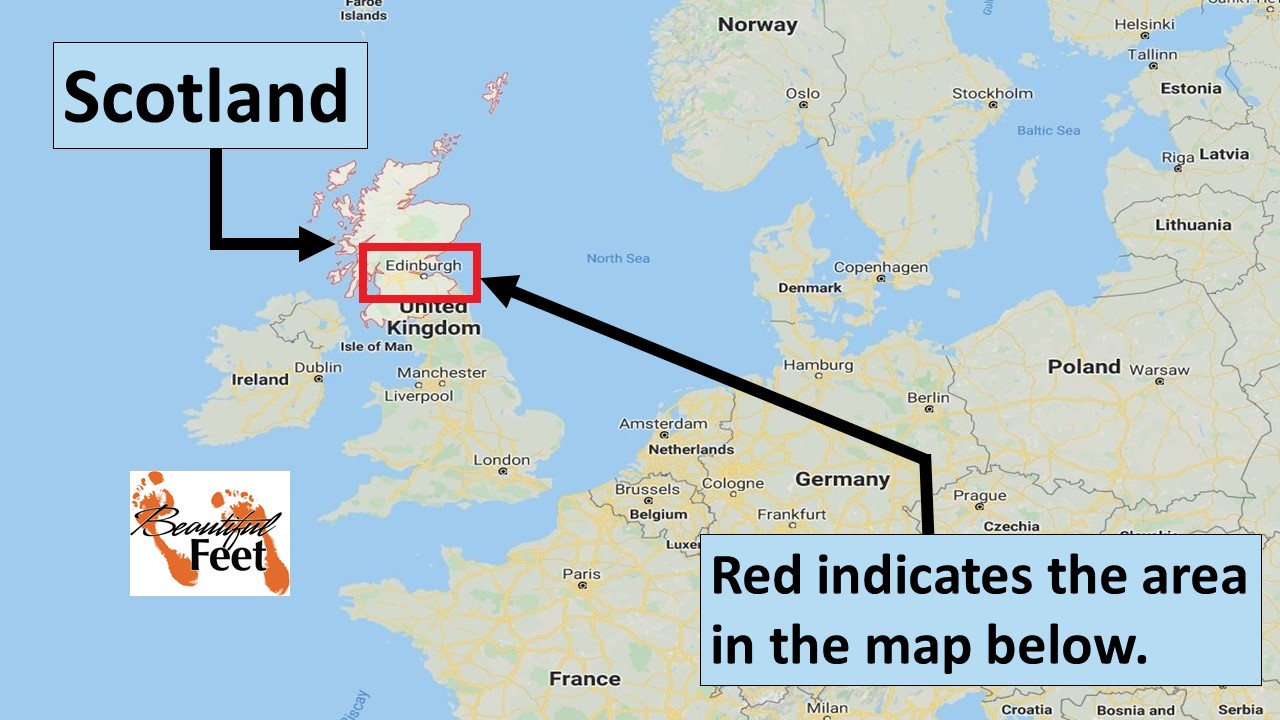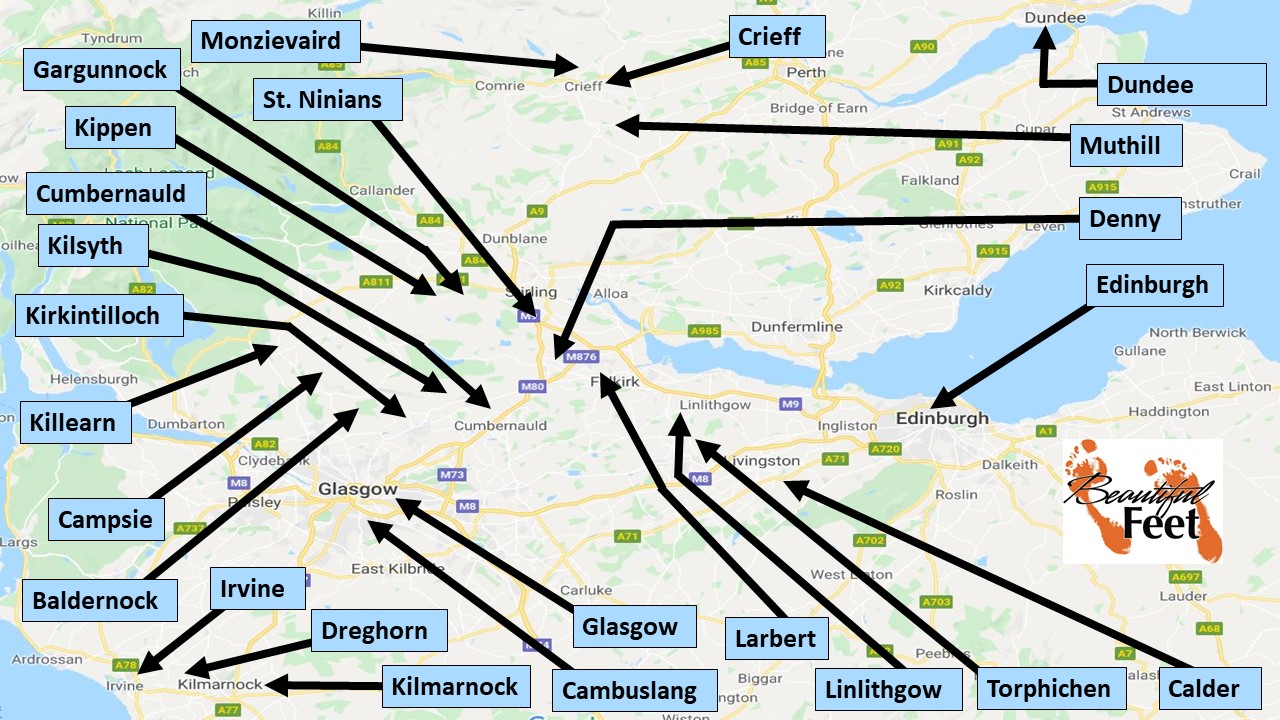

Introduction
In 1742 Scotland was experiencing a sweeping revival, affecting one town after another. It could best be described as a pandemic, sweeping across the land, infecting everyone it came into contact with.
The first “outbreak” of the revival was noted when George Whitefield preached in Glasgow, Scotland, in August 1741. At least 14 people from the town of Cambuslang were present to hear Whitefield preach, and they became “infected,” carrying the revival “contagion” back with them to Cambuslang.
At the early part of the next year, daily prayer meetings were taking place in Cambuslang, and by February hundreds had been converted. By the middle of the summer, the numbers of those converted rose into the thousands.
Attending the Cambuslang meetings was James Robe, the pastor from the town of Kilsyth, who was seeking to be “anointed with fresh oil” so he could take the revival fires back to his own congregation. Robe received the anointing he was seeking, and the revival fires fell on Kilsyth in April 1742, and the “contagion” could not be contained, as it spread from one Scottish town to the next.
Extraordinary Prayer in Baldernock, Scotland
Another Scottish town that experienced an outpouring of the Holy Spirit was Baldernock. The church in this town had been without a pastor, and a local school principal (James Forsyth) was filling that role as a type of interim pastor.
Beginning in February 1742, on a daily basis, Forsyth had been pleading with the students in the school to place their faith in Christ. In March, one of those students, a boy, went to the meetings being conducted in Cambuslang and was converted. Upon his return he began to meet in the school room with about three other boys for prayer and singing of psalms. Within 14 days there were around 10 more who had joined them and were converted. The ages of these boys were between 8 and 13.
This prayer meeting of young boys began meeting three times per day: early morning, at noon, and in the evening. Their passion for Christ, and the evident awareness of His presence, dramatically changed their behavior. This group lost their interest in childhood games and their conversation and appearance also changed. These changes were noticed by the other children and it led to even more conversions.
Forsyth had been conducting two prayer meetings per week with adults, as many from the Baldernock congregation were desperate to have the same outpouring of the Holy Spirit as was taking place in Cambuslang.
This desperation in prayer led to the conversion of about 90 people in July of 1742. Some of the 90 people were converted at revivals in neighboring towns, but most were converted during the prayer meetings in Baldernock.
One example of a conversion experience involved two young ladies during a prayer meeting held on June 22, 1742. These two young ladies, who had recently attended the services that were ongoing at Cambuslang, were asking (mockingly) why “people cry out” during the preaching of the Word of God. They had evidently witnessed some people coming under severe conviction of sin, and who were weeping bitterly. Yet, within 15 minutes after the prayer meeting started at Baldernock, they themselves came under tremendous conviction of sin and learned why those at Cambuslang were “crying out.”
Happenings in the Town of Campsie
A pastor from the neighboring town of Kirkintilloch was present to deliver a sermon at the Campsie church, and during his opening prayer, tears were seen running down his cheeks. Soon after he began to preach,
The Spirit of the Lord, like a mighty, rushing wind, filled the house in such a manner that almost the whole congregation was melted into a flood of tears, accompanied by bitter outcries on the part of the newly awakened.
One man spoke of this service with these words:
Of all the days of power, I never saw the like,… the influence of the Holy Spirit, went from corner to corner, which was evidenced not so much in outcries, as in a sweet mourning and low motion … When the bulk of the meeting was dispersed, they came out of the churchyard like a company or two of soldiers, in three and four abreast, supporting the distressed men and women.
By the end of August 1742, there were around 100 converted in the town of Campsie.
Young People in the Town of Kirkintilloch
The first signs of revival in Kirkintilloch were among the youth. In April 1742, about sixteen of them began to meet in a barn for prayer without the minister’s knowledge. When he found out about this prayer meeting, he joined them to encourage them. The following month the revival spread to the rest of the community, wherein 120 were converted.
Happenings in the Town of Muthill
As early as January 1742, the Lord began His stirring of the congregation at Muthill. The revival’s power spread through that community, and by July there were around 50 that had been converted.
The pastor, William Halley, said that in August, during a communion service, “the floodgates opened,” and that “God was in the place,” and that “many were brought to the Conqueror’s feet.” Halley indicated that from that time on his weekly preaching was accompanied by extraordinary power, producing deep conviction of sin, leading to the conversion of many.
The presence of God was so real, and the people’s hunger for the Word of God so intense, that Halley was required to commence a Sunday evening service. Following this the number of prayer groups increased from two to eighteen, with three of these prayer meetings being led and attended by forty children. Of these children’s prayer meetings, Halley wrote:
Oh how pleasant it is to hear the poor young lambs addressing themselves to God in prayer, with what fervour, with what proper expressions do I hear them pouring out their souls to a prayer-hearing God, so that standing at the back of the door, I am often melted into tears to hear them.
Happenings in the Town of Killearn
The town of Killearn experienced an awakening on the third Monday of July 1742, at the end of a 4-day communion season.
Many more accounts could be told of how this revival spread from town to town.

Communion Season, also called a Holy Fair. The above picture was a Holy Fair in Mauchline, Scotland. Painted by Alexander Carse in 1830.

Painting of George Whitefield preaching at Cambuslang – May 1742


Some of the many towns the revival impacted
In all the areas reflected in the above map, the following was reported:
- The lifestyle changes were noticeable to all.
- Nominal Christians made commitments to Christ.
- Fellowship meetings were initiated.
- Families were conducting prayer and Bible reading in their homes.
- The Sabbath was kept holy.
- Open profanity mostly disappeared.
- Renewed honesty was noticeable.
- Drunkenness ceased.
- Restitution was often noted.
Manifestations of God’s Convicting Power and Presence (opposition to the revival)
What is often expunged from denominational revival accounts is the phenomena that accompanies revival. Many state that the phenomena is unwanted, demonic, or fanatical delusions. It must be made clear that the revivals being reported on in this post were not among Pentecostal or Charismatic believers. These were highly formal Presbyterians, and they experienced:
► Crying, throughout the singing, sermon, and prayers
► Shrieking
► People having visions of hell
► Hearing the shrieks of the damned in hell
► By clapping their hands or beating their chests, people expressing their deep agony due to the conviction of sin
► Prostrations (fainting—loss of the ability to walk due to God’s presence)
► Violent trembling, contortions, or convulsions
► Visions of Jesus
► After people received the joy of their salvation, they were criticized by the opponents of the revivals who labeled them fanatics, as they went out and shared the Good News with “everyone they bumped into.”
Sources
► 1742 Kilsyth Revival by Beautiful Feet
► 1742 Cambuslang, Scotland Revival by Beautiful Feet
► Land of Many Revivals by Tom Lennie
► Narratives of Revivals of Religion in Scotland, Ireland, and Wales by Presbyterian Board of Education
► The Cambuslang Revival by Arthur Fawcett
► The Revivals of the Eighteenth Century by Duncan MacFarlan
Return to List of Revival Stories
Chet & Phyllis Swearingen:
Office: (260) 920-8248
romans1015@outlook.com
Beautiful Feet
P.O. Box 915
Auburn, IN 46706

